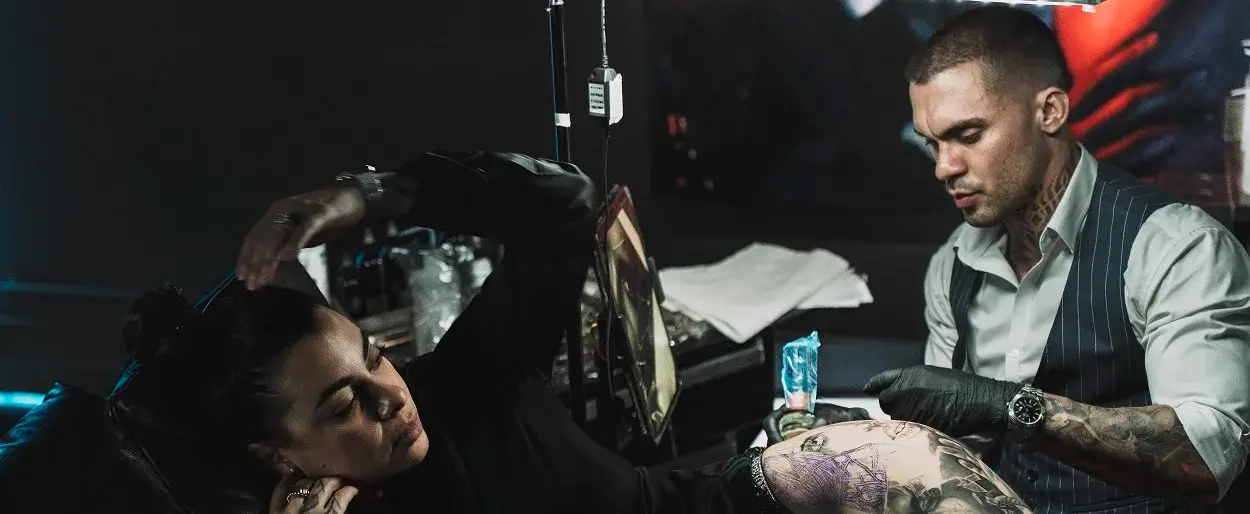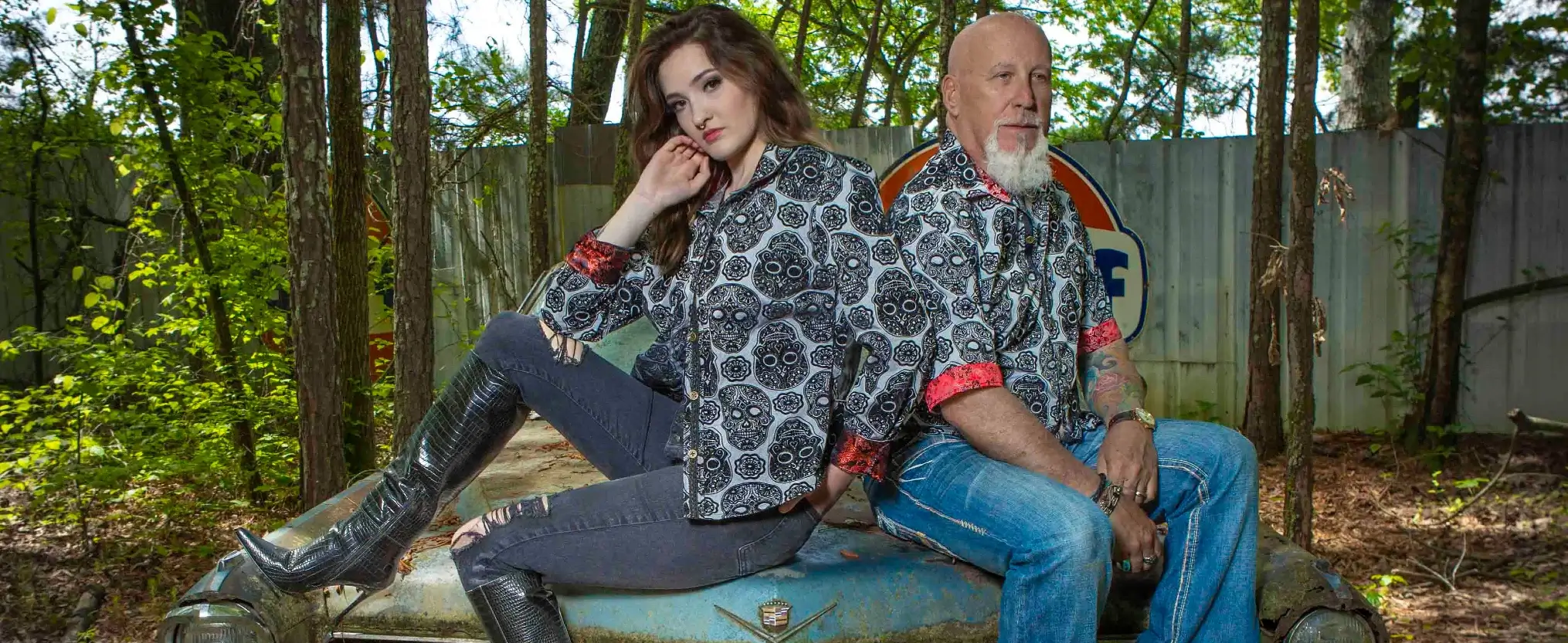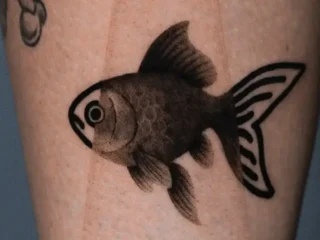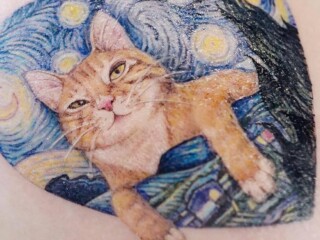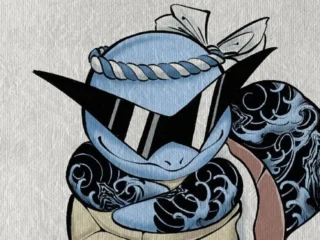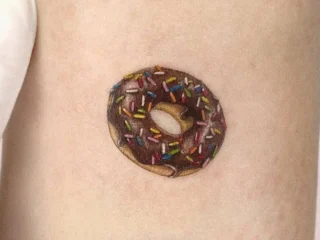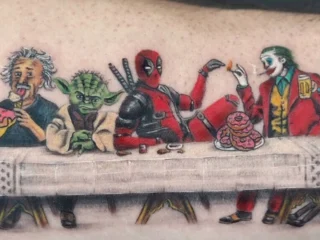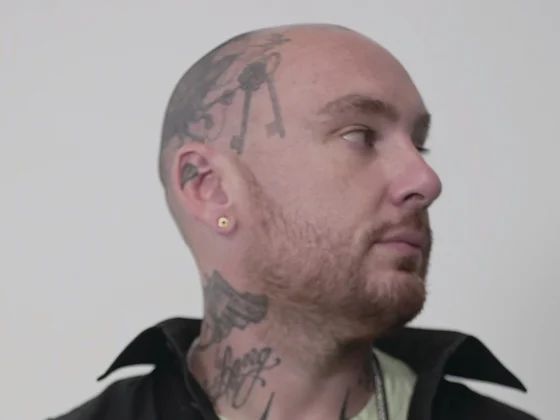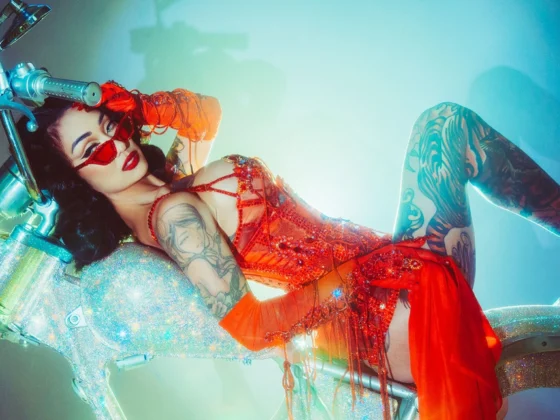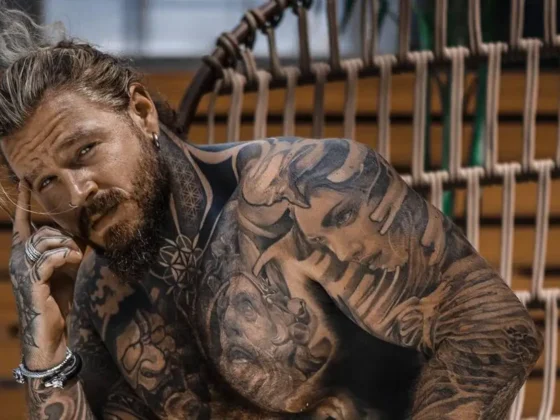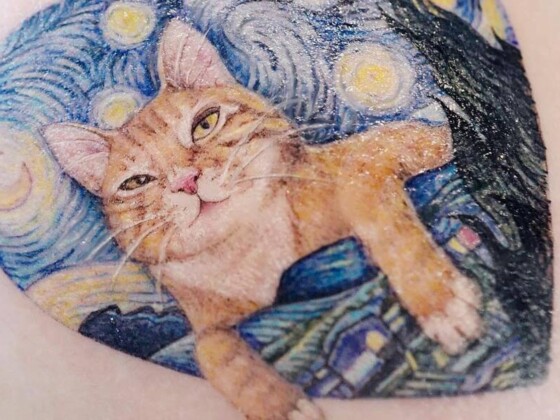Inked Mag Staff
December 23rd, 2014
American Horror Story’s Historical Tattooed Freak Show
Dive into the world of American Horror Story: Freak Show. Uncover the unique characters and chilling storylines of this captivating season.
Aliens, witches and ghosts, oh my! For all the die-hard American Horror Story fans out there that have been following Ryan Murphy’s antithesis to the joyful musical camp found in Glee, you can easily associate these fictional creatures aptly to the first three seasons of AHS and the formulaic horror-film archetypes we so often fall in love with. Season one, Murder House, featured various ghosts and demons to fulfill the “haunted house” horror style; season two, Asylum, was a discombobulated assortment of a modern day Ed-Wood-meets-Rob-Zombie film. And season three, Coven, brought us into the trending world of voodoo and witchcraft. Now, four seasons in, viewers sit watching a 1950s freak show unraveling at its seams. With scenes shot in old school diners or big tops and catch phrases that haven’t been cool since John Travolta first resurrected them in Grease, I was left questioning why this period piece is the scariest and most convincing storyline Murphy has presented to date.
And then it hit me.
The only thing scarier than what comes out of the imagination is reality. After the first three successful paranormal driven seasons the creators behind American Horror Story decided the next best direction to go would be to unpack history and recreate terror from past, thus giving us the best season yet, American Horror Story: Freak Show.
The “freaks” that we see every Wednesday night on FX are mainly all figures pulled from historical sideshow characters and carnival acts. Kathy Bates’ bearded lady is a staple of old school freak shows (and modern ones, too, if you take a trip to Coney Island or Venice Beach); Siamese twins, like the ones played by Sarah Paulson, have been a documented phenomena for decades; and the Lobster Boy deformity brought to screen by our hunky misguided “hero,” Evan Peters, is a real recorded physical ailment. (Evan, if you and Emma don’t work out, I’m currently single.) And then you have figures like Paul the Illustrated Seal, as portrayed by Mat Fraser, who is based off of a combination of modern and past day entertainment attractions—Mat Fraser, himself, for his solo performance act “Seal Boy” and the infamous tattooed man of 1800s P.T. Barnum fame.

Fraser, the show’s dashing voice of reason, was born with phocomelia afflicting both of his arms, as depicted in the show, however, when it comes to special effects, it is the extensive ink added to Paul that makes the character an “illustrated” one and a throw back to the inked icons of freak show history. Arguably, the two most famous tattooed men of early American sideshows were James F. O’Connell and Captain Costentenus. 1842 saw O’Connell as the first fully tattooed man to make an entertainment career out of being tattooed in the United States. His work with P.T. Barnum was eventually followed up and somewhat overshadowed by George Costentenus, better known as “The Greek Albanian.” Costentenus teamed up with Barnum in the 1870s and became his highest grossing act of the era. With over 330 tattoos Costentenus was one of the only glimpses people of the 19th century could have at a full body suit, or even just a tattoo in general. It is believed that every part of Costentenus was tattooed, except for the bottoms of his feet.
Similar to the storyline behind Freak Show’s scheming con artist Stanley (Denis O’Hare), Barnum was known for showcasing attractions that were laced with deception and fraud—we can recall learning in middle school about Barnum’s infamous Feejee Mermaid who turned out to simply be a monkey’s head sewn onto a fish’s tail. With Barnum so caught up in the majesty behind the story, it comes with little surprise that both O’Connell and Costentenus had grand tales for the origins of their ink, both claiming to have been forcefully tattooed upon being captured by tribes during their own adventures.

Though historically many of the tattooed men and women in freak shows chose to be tattooed, many of their stories claim that they were tattooed against their will as to keep up the illusion of their act. American Horror Story, however, gives us a little glimpse into what being tattooed against your will might have been like with the character Penny. Penny, played by Grace Gummer, is a candy striped nurse and love interest to Paul the Illustrated Seal. Though, in the story line, she is viewed as “normal” to the outside world, her desire to be with the freak show leads her father to having her drugged, tattooed and modified against her will. The result is a girl who looks more like a lizard-hybrid than someone in her mid-twenties. The scene, though rather unsettling, also displays an old school glimpse at tattooing in the early 1950s, before the era of rotary machines, in which the use of the electric tattoo machine was becoming more common in shops around the country.
The lizard-like creature that Penny emerges as also appears to be a nod towards a couple of historical figures. La Belle Irene is thought to be the first fully tattooed woman in entertainment, who made her first appearance in London in 1890. Several years later, in 1927, the world was met with the sideshow performances of Horace Ridler, also known as the Great Omi or Zebra Man. As time went on and the world found other forms of entertainment, as is happening with our freaks in Murphy’s world, tattooed characters became less shocking, and therefore less appealing to freak show audiences. This drove people like Ridler to take their ink and body modifications to even further extremes. When Ridler became the Great Omi, he was not the average tattooed sideshow man, but someone completely covered in thick black stripes mimicking a zebra, filed teeth, and dramatic piercings. For his dramatic alterations he became one of the most famous tattooed men of the time.

As Freak Show resurfaces these infamous figures from sideshow history’s past, the show slowly begins to depict the various “normal folk” as the true villains as opposed to the ghouls and monsters of past seasons. Now, old and new American Horror Story fans alike are kept at the edge of their seats rooting more for characters like the good-hearted Paul and newly transformed Penny than anyone who holds a smirk in their eye the way Denis O’Hare does.
Photos from Vanishing Tattoo and Public Domain Review.
Editor's Picks
Bridging Classical Art and Modern Tattooing
Esteban Rodriguez brings the discipline of classical fine art to the living canvas of skin, creating hyper-realistic tattoos that merge technical mastery with emotional depth.
Show Your Ink Fashions Brings Custom Style to Tattoo Culture
Show Your Ink Fashions creates custom shirts designed to showcase your tattoos as wearable art, blending fashion with personal expression.
The Ultimate “Superman” Tattoo Roundup: Just in Time for Superman’s Return to Screens
With Superman’s big return to theaters, fans are revisiting some of the most iconic ink inspired by the Man of Steel.


